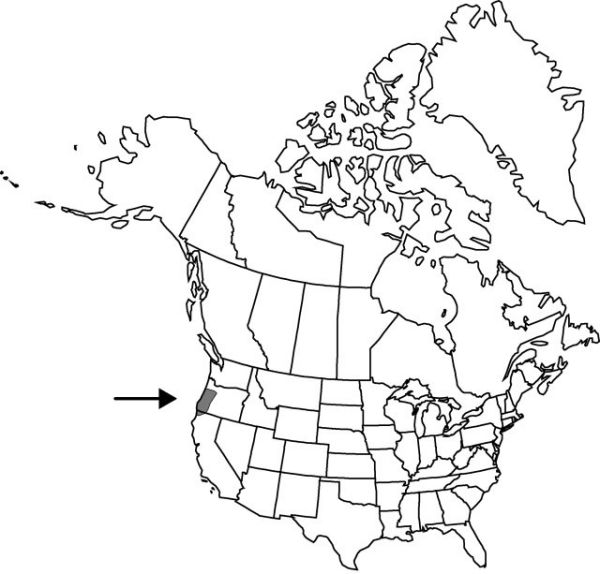Difference between revisions of "Iris chrysophylla"
Fl. N. W. Amer., 633. 1902.
FNA>Volume Importer |
FNA>Volume Importer |
Revision as of 21:44, 16 December 2019
Rhizomes compact, dark brown, slender, 0.5–0.6 cm diam., covered with old leaf bases; roots few, fibrous. Stems simple, solid, slender, 0.25–2 dm. Leaves: basal with blade light green, pink or red-tinged basally, finely ribbed, linear-acute, 2.5–5 dm × 0.3–0.5 cm, somewhat glaucous, margins not thickened; cauline 1–3, imbricated, blade bractlike, inflated. Inflorescence units usually 2–flowered; spathes sometimes flushed pink or purple apically, lanceolate to linear-lanceolate, 5–10 cm × 3–7 mm, unequal, outer much shorter and narrower than inner, herbaceous, margins often scarious, apex acute. Flowers: perianth cream or very pale yellow, with deeper yellow or lavender veins; floral tube linear, slender, 4.5–12 cm; sepals with bluish tinge and veins, oblanceolate, 4.6–7 × 1–2 cm, base gradually attenuate; petals lanceolate, 3–5.5 × 0.6–1.2 cm, base gradually attenuate, apex emarginate; ovary 1–1.8 cm, base abruptly attenuate into pedicel (when present), apex gradually acuminate into floral tube; style 2–3 cm, crests 1.5–2 cm, sometimes exceeding arms, apex narrowly pointed; stigmas tongue-shaped, margins entire; pedicel absent or 0.5–1 cm at anthesis. Capsules sometimes on elongated pedicel, oblong, round in cross section, sharply beaked, 2–3 cm. Seeds buff, slightly compressed. 2n = 40.
Phenology: Flowering Apr–Jun.
Habitat: Open, coniferous forests
Discussion
Iris chrysophylla hybridizes with I. bracteata, I. douglasiana, I. innominata, I. macrosiphon, I. purdyi, I. tenax, and I. tenuissima.
Selected References
None.
